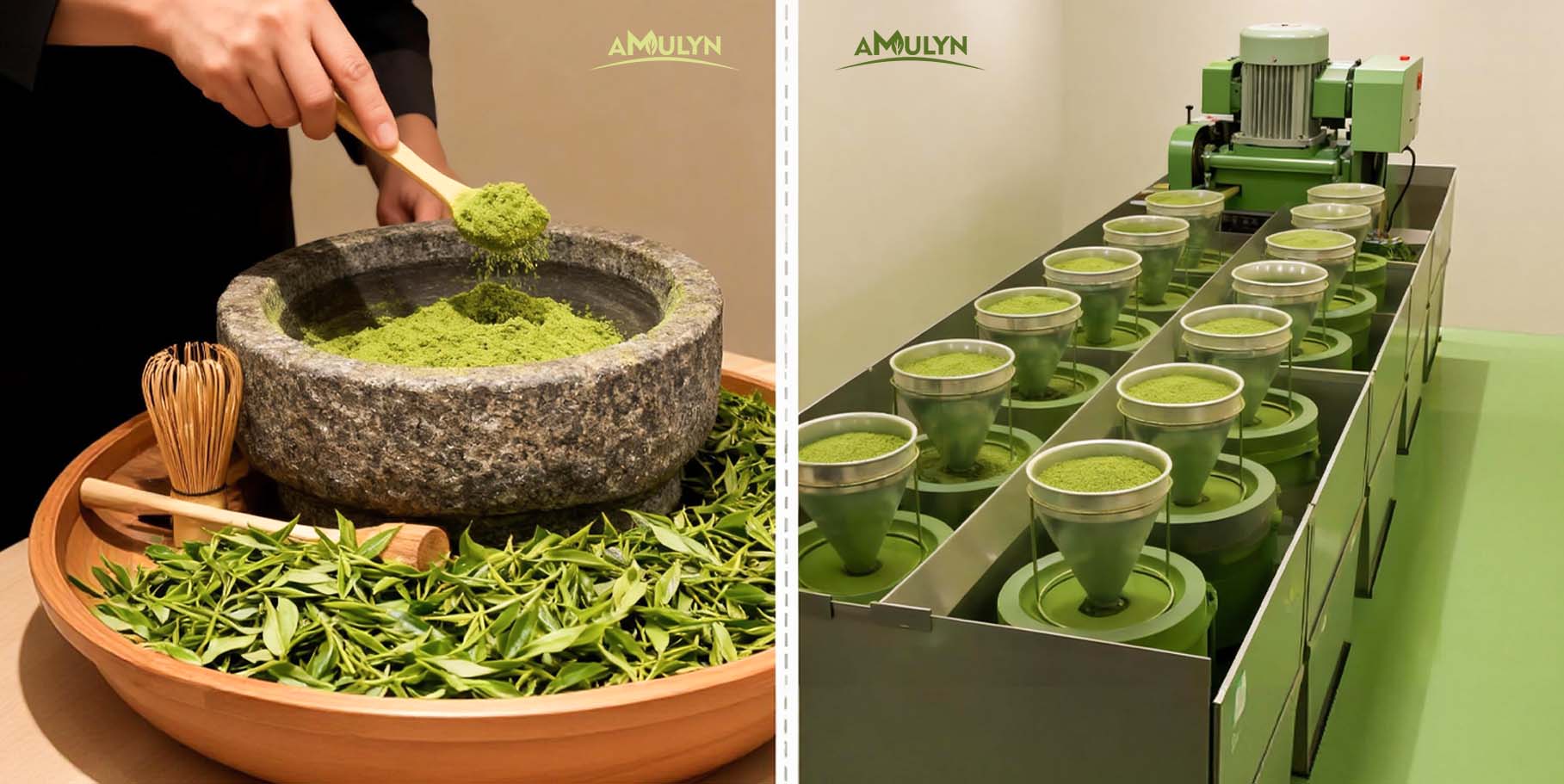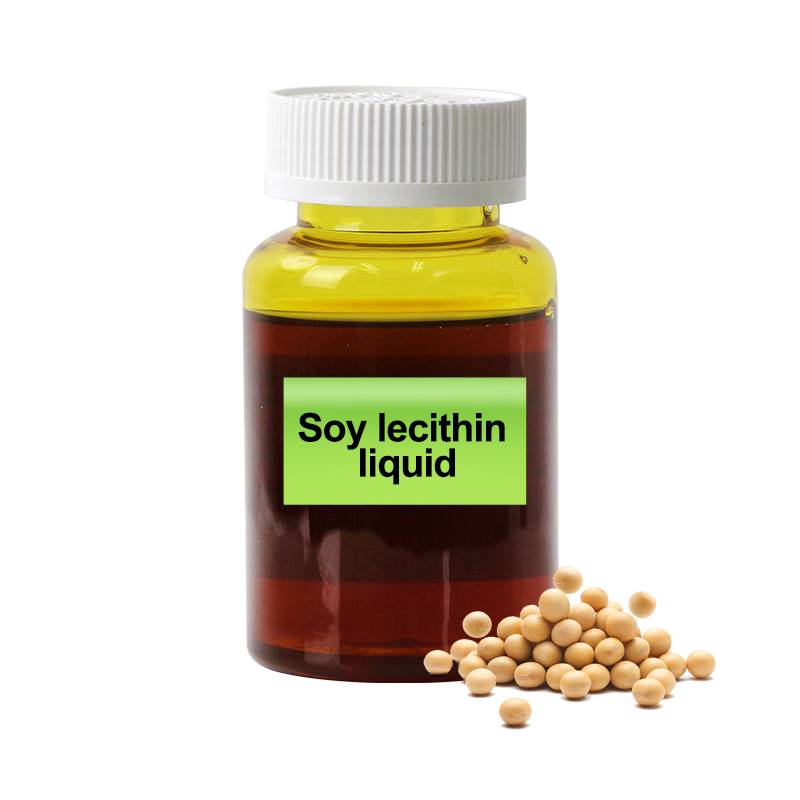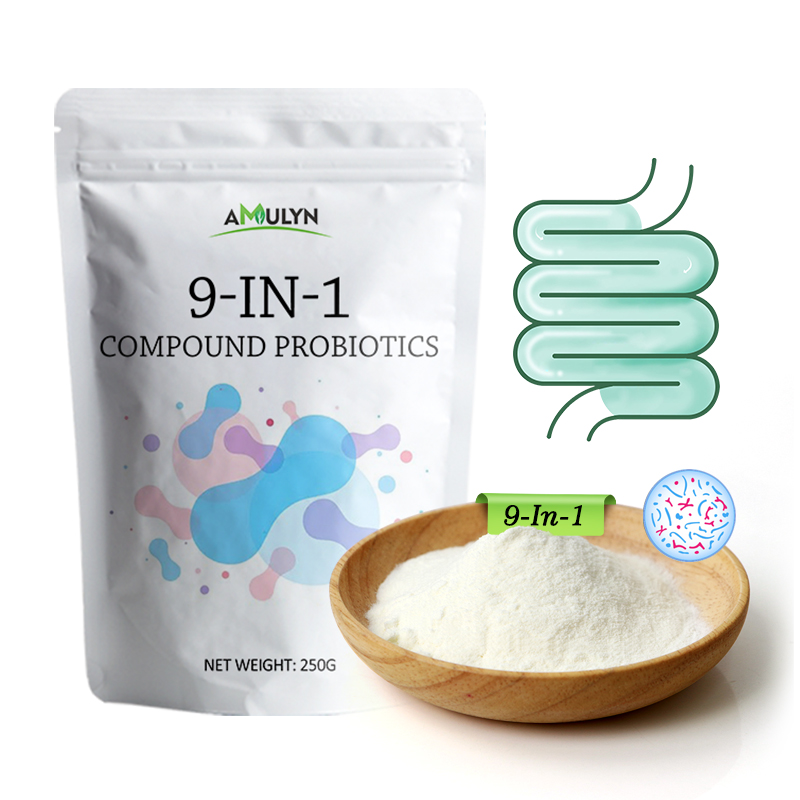Introduction to Matcha Processing
Matcha, a tea tradition that originated in China's Tang Dynasty and flourished in Japan, has become a global wellness phenomenon. Yet, few consumers realize that the grinding method directly impacts matcha's quality, taste profile, and nutritional value.
For C-end consumers seeking premium lifestyle products, understanding matcha processing enables informed purchasing decisions. For B-end clients focused on cost-effectiveness and product consistency, selecting the appropriate processing method is crucial for brand reputation and profit margins.
The Craft: Stone Mills vs. Machine Grinding
The Art of Traditional Stone Milling
Stone milling (Ishi-Usu) represents centuries of perfected craftsmanship, utilizing granite mills rotating at precisely 3 seconds per revolution.
Advantages:
-
Low-temperature processing: Preserves 98% of chlorophyll and amino acids by avoiding heat damage
-
Uniform particle size: Creates ultra-fine 15-micron powder for silky smooth texture
-
Unique flavor profile: Develops distinctive "hika" aroma, adding warm complexity
-
Vibrant color: Maintains brilliant jade-green hue with strong visual appeal
Limitations:
-
Limited capacity: Produces only 40-50g per hour, challenging large-scale production
-
Higher costs: Processing cost approximately $1.5 per kilogram
-
Microbial concerns: Open environment may harbor higher microbial content
Modern Machine Grinding Efficiency
Machine grinding, primarily using ball mill technology, crushes tencha leaves through impact and extrusion.
Advantages:
-
High efficiency: Produces 1+ kg per hour, meeting industrial demands
-
Cost-effective: Processing cost only $0.15 per kilogram
-
Sealed environment: Lower microbial contamination risk, enhanced food safety
-
Consistency: Controlled 5-10 micron particle size ensures stable quality
Challenges:
-
Temperature control: Heat generation may affect color and flavor
-
Nutrient loss: Some chlorophyll may degrade during processing
-
Texture differences: May create slight graininess affecting premium experience
Key Differences Between Stone-Ground and Machine-Ground Matcha
|
Comparison Factor
|
Stone-Ground Matcha
|
Machine-Ground Matcha
|
|
Particle Distribution
|
Uniform & fine (15μm)
|
Slightly coarse (5-10μm)
|
|
Color Profile
|
Brilliant jade green
|
Deep green
|
|
Texture Experience
|
Silky smooth, no graininess
|
Slight graininess
|
|
Nutrient Preservation
|
98% nutrients intact
|
85-90% retention
|
|
Flavor Characteristics
|
Sweet, refreshing, with hika aroma
|
Slightly bitter, direct flavor
|
|
Foaming Performance
|
Rich, delicate foam
|
Less foam formation
|
|
Price Range
|
Premium ($1.5/kg processing)
|
Economical ($0.15/kg processing)
|
|
Production Efficiency
|
40-50g/hour
|
1+kg/hour
|
|
Storage Requirements
|
Strict (light-proof, cool)
|
Standard (room temp, sealed)
|
|
Application Scenarios
|
Tea ceremony, pure tea, premium gifts
|
Beverages, baking, industrial use
|
Excellence in Different Types of Matcha
Stone-Ground Matcha: The Pinnacle of Craftsmanship
Stone-ground matcha represents the pinnacle of matcha craftsmanship, ideal for premium market segments.
C-End Value Proposition
-
Ritual experience: Perfect for tea ceremonies, meditation, and relaxation
-
Maximum health benefits: Preserves complete L-theanine, EGCG, and active compounds
-
Sensory pleasure: Silky smooth texture with sweet aftertaste
-
Status symbol: Reflects refined taste and respect for traditional culture
B-End Applications
-
Premium tea houses: Creating pure tea beverages to elevate brand positioning
-
Artisan baking: Enhancing product differentiation in high-end confectionery
-
Gift market: Preferred choice for corporate gifts and holiday packages
-
Cultural experiences: Standard for tea ceremony education and demonstrations
Quality Indicators
-
Color: Brilliant jade green
-
Fineness: ~15 microns
-
Capacity: 40-50g per hour
-
Shelf life: 6 months (requires light-proof, sealed, cool storage)
Machine-Ground Matcha: Value and Consistency
Machine-ground matcha delivers excellent value and consistent quality, becoming the backbone of modern beverage industry.
C-End Practical Value
-
Daily consumption: Ideal for matcha lattes, smoothies, and baking
-
Cost-effective: Affordable pricing suitable for regular consumption
-
User-friendly: Easy to dissolve with minimal clumping
-
Versatility: Perfect for cooking, baking, and beverage applications
B-End Commercial Advantages
-
Scalable production: Meeting large-volume demands for chain stores
-
Cost control: Reducing raw material costs while maintaining profit margins
-
Standardized operations: Ensuring product consistency across locations
-
Stable supply chain: Industrial production with predictable delivery
Typical Applications
-
Coffee chains: Matcha lattes and frappuccino series
-
Baking factories: Matcha cakes, cookies, and bread ingredients
-
Beverage manufacturers: Ready-to-drink matcha and functional drinks
-
Restaurant chains: Desserts, ice cream, and milk tea ingredients
When to Choose Which: A Strategic Guide
When to Choose Stone-Ground Matcha
C-End Consumers:
-
Seeking authentic tea ceremony experience
-
Prioritizing maximum nutritional value
-
Enjoying pure tea (without milk/sugar)
-
Using for meditation, relaxation, or social sharing
-
Giving as premium gifts
B-End Businesses:
-
Positioning as premium tea brand
-
Operating tea culture experience venues
-
Creating artisan confectionery
-
Customizing corporate gifts
-
Competing through brand differentiation
When to Choose Machine-Ground Matcha
C-End Consumers:
-
Daily home consumption
-
Making matcha lattes or smoothies
-
Baking and cooking applications
-
Budget-conscious but health-focused
-
Valuing convenience and versatility
B-End Businesses:
-
Standardized products for chain beverage stores
-
Large-scale baking production
-
Ready-to-drink beverage manufacturing
-
Strict cost control requirements
-
High supply chain stability demands
Hybrid Strategy Approach
-
Product tiering: Stone-ground for premium line, machine-ground for standard
-
Scenario-based differentiation: Stone-ground for pure tea experience, machine-ground for blended beverages
-
Seasonal adjustments: Promote stone-ground during spring tea season, machine-ground for daily sales
-
Customer segmentation: Stone-ground for mature markets, machine-ground for emerging markets
Ultimately, the best matcha is the one that suits your needs. Understanding these processing differences will empower you to make informed choices, whether for personal enjoyment or commercial success.
GET AMULYN MATCHA
 Koicha Ceremonial Grade Matcha Powder
Koicha Ceremonial Grade Matcha Powder Organic Ceremonial Grade Matcha Powder
Organic Ceremonial Grade Matcha Powder Premium Beverage Grade Matcha Powder
Premium Beverage Grade Matcha Powder Everyday Culinary Grade Matcha Powder
Everyday Culinary Grade Matcha Powder Organic Instant Pure Matcha
Organic Instant Pure Matcha Soy Lecithin Powder
Soy Lecithin Powder Sunflower Lecithin Powder
Sunflower Lecithin Powder Soy Lecithin Granules
Soy Lecithin Granules Phosphatidylcholine
Phosphatidylcholine  Phosphatidylserine
Phosphatidylserine Soy Lecithin Liquid
Soy Lecithin Liquid Reishi Mushroom Powder
Reishi Mushroom Powder Lion's Mane Mushroom Powder
Lion's Mane Mushroom Powder Cordyceps Sinensis Powder
Cordyceps Sinensis Powder Chaga Mushroom Powder
Chaga Mushroom Powder Shiitake Mushroom Powder
Shiitake Mushroom Powder Cordyceps Militaris Powder
Cordyceps Militaris Powder



























































